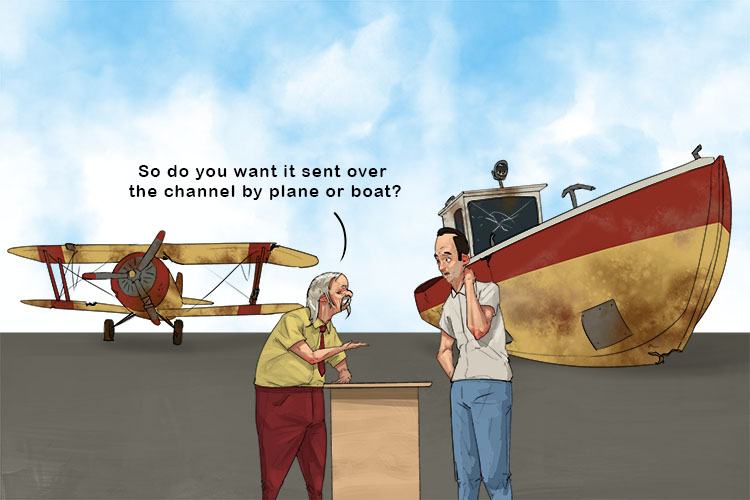distribution channel – the method used by a company to get its goods to its customers
(Pronounced dis-truh-byoo-shn cha-nul)
To remember what distribution channel means use the following mnemonic:
You can distribute to another nation across the English channel (distribution channel) by plane or by ship. Which method shall we use to send it to our customers?

How a company gets their products to the customer or end consumer varies in many ways.
A case study that exemplifies the many different ways this occurs is Coca Cola Ltd.
They distribute their products through:
- Supermarkets
- Airlines
- Pubs/Bars
- Restaurants
- Cafes
- Nightclubs
- Convenience stores
- Fuel stations
- Vending machines
- Hotels
Coca Cola will have teams devoted to each section to make sure each distribution channel is carefully maintained. All of Coca Cola’s methods are called “indirect channels” i.e. they do not sell directly to the consumer, but sell to a third party who then sells it on. Vending machines can in certain situations be considered a direct channel of distribution but are most often operated by a third party, so they can be considered both a direct and indirect channel.
Avon is a makeup, perfume and haircare company that pioneered a model of direct selling via local representatives (agents), which has grown into a network of over 5 million. These Avon representatives push the brand’s products on its behalf in return for a cut of the sale.
Amazon has chosen to sell products through a direct channel to the consumer through the internet. Amazon was founded by Jeff Bezos from his garage in Bellevue Washington USA on July 5 1994. It is now the world’s largest online retailer.
So, why doesn’t everyone buy their products directly from the manufacturer?
A larger wholesaler of quarry sand decided to not only sell large volumes of sand to builder’s merchants (indirect channel) but smaller amounts to the consumer (direct channel). So, in fact, they wanted to be a hybrid company utilising both direct and indirect distribution. After several near accidents with the smaller customers moving in and around large trucks, the company decided to sell only to builder’s merchants.
Many customers who want to buy bathroom tiles or a bathroom suite are unlikely to purchase these products without first seeing and touching the product. Most will also want help designing the layout. Choosing a new bathroom suite is expensive and a person is likely to live with the results for at least 15 years, so will take great care choosing. Bathroom and tile companies have to sell their goods through an indirect channel. If retailers find out that the manufacturer is also selling directly to customers for a lower price, then the retailer will not display their products.
Timber importers distribute indirectly to wood merchants which in turn cut the timber planks into many different sizes and sections depending on their market’s tastes. A timber importer could not possibly sell directly to the consumer in such small quantities and with such differing cross sections. A lot of timber is sold in large quantities to furniture manufacturing companies. The larger the one-off purchase, the cheaper it is to send the timber. If you can buy wholesale, you can reduce your manufacturing costs.
The distribution channel a company chooses is an important managerial decision.




